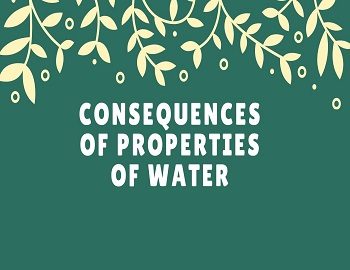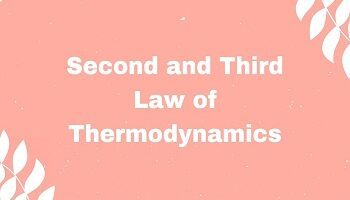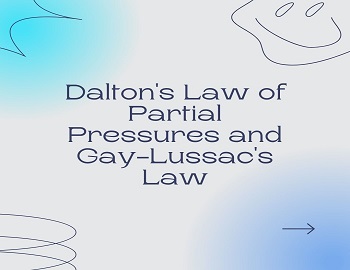Table of Contents
Consequences of Properties of Water:
Solid ice is lighter than liquid water:
This is a unique property of water. In other substances this is not so; solid form is generally heavier than the liquid form. For example- solid ghee is heavier than liquid ghee. Water at 4°C is heaviest and it is lightest at 0°C. Ice floats on the surface of a lake or an ocean. Water at the bottom of a lake is at 4°C. Ice (at the top) is a bad conductor of heat. It acts as an emulative cover for the warmer water beneath. It prevents the outside cold from reaching the bottom. That is why fish and other aquatic animals do not freeze and are able to survive in severe winters where the temperature goes down below 0°C.
Water is an Excellent Solvent:
It dissolves many substances and makes their solution. Oxygen is soluble in water. It is this oxygen dissolved in water that fish breathe to survive. The fish exhale carbon dioxide which is also soluble in water. The aquatic plants convert this carbon dioxide again to oxygen by photosynthesis. The balance of oxygen and carbon dioxide is maintained in the water. But sometimes minerals get dissolved in running water making the water hard. Drinking of hard water may cause diarrhoea. If hard water is used for washing, then some soap is wasted. On heating the hard water, the salts present in the water forms a layer called ‘fur’. This corrodes metals.
The Heat Capacity of Water is the Highest among all Liquids:
To resist the temperature, water requires a large amount of heat. Lakes and oceans influence the climate of adjacent land areas and cities. Such places do not experience much variation in temperature rapidly throughout the year. It is also responsible for maintaining the temperature of our body which has about 70% of water. The temperature of our body remains constant at 37°C. We feel cool when we perspire. For evaporation, perspiration absorbs heat from our body, and thus our body feels less warm. Water is also used in hot-water bottles as it takes a long time to cool down. Other uses of maximum heat capacity of water are to cool the engines of cars and in-room coolers.
Water is Responsible for Rusting:
When iron is exposed to air (containing water vapour), its surface rapidly gets covered with a layer of reddish-brown coating. This coating is called rust. Due to rusting, iron is corroded. Rusting causes great damage to the iron used in construction buildings, bridges, machines, ships, vehicles, etc. Rusting can be prevented by painting, oiling, greasing or electroplating the iron surface. It can also be prevented by coating zinc on iron. This process of coating zinc on iron is called galvanization of iron.









Comments (No)